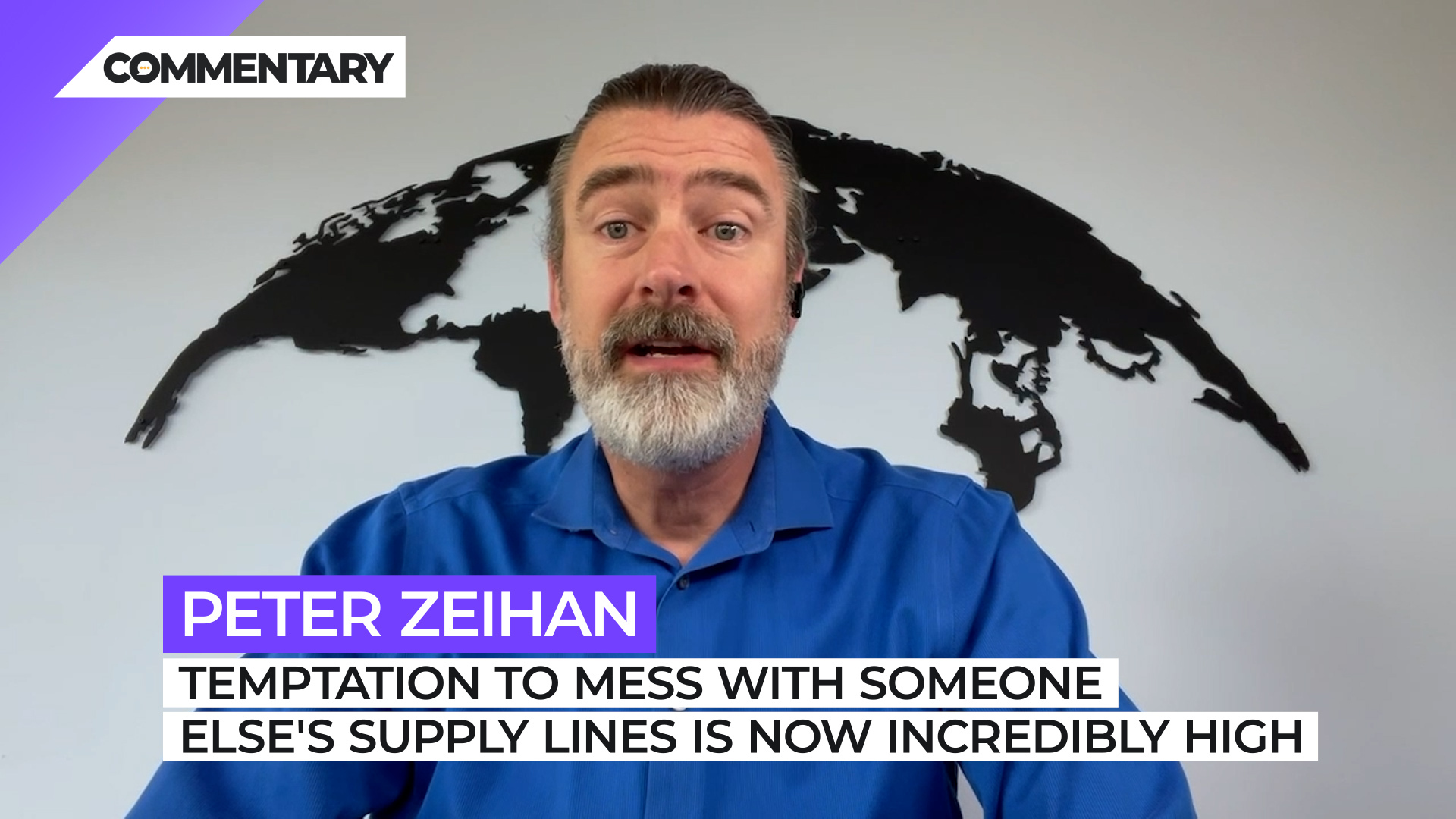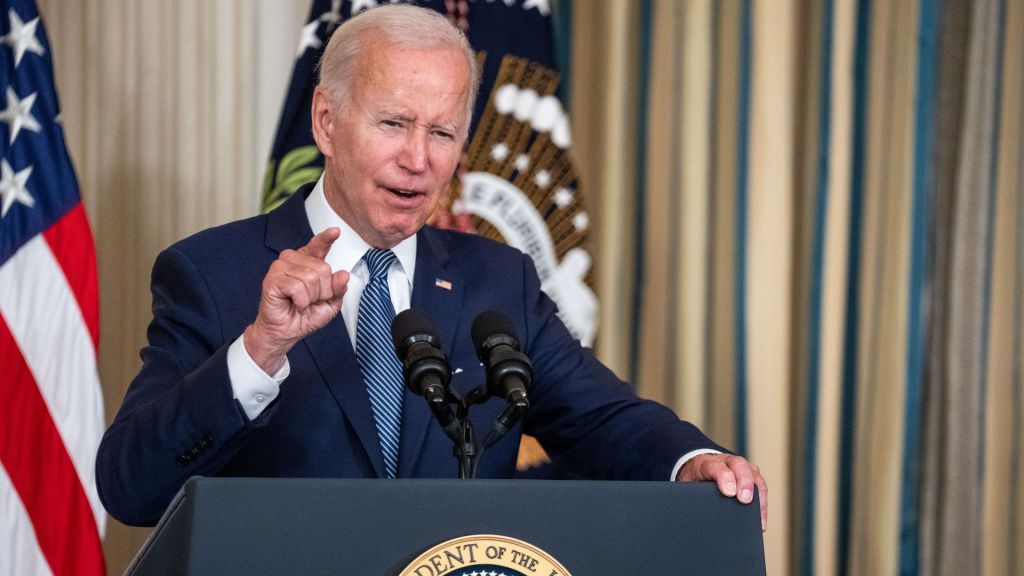
Commentary
-
Our commentary partners will help you reach your own conclusions on complex topics.
Everybody, Peter Zeihan here coming to you from Colorado. The news of this week is this oil export ban that the Europeans are putting in place. The idea is that Russia will still be able to export their crude to international markets, but there is now a price cap in what they can ask. It’s currently set at $60 although they will change that over time, based on…what happens with international energy prices.
The enforcement mechanism is that the Europeans dominate global insurance and global maritime services. And that any vessel that is carrying crude that is above that $60, that was sale point, won’t be able to access any European financial or physical services. So that’s port access; that’s insurance policies. And without a maritime insurance policy, your vessel cannot enter port exit port or leave a constrained waterway, say like the Suez Canal, or the Turkish Straits.
Now…this is unprecedented in any number of ways. And so I really don’t know how it’s going to play out. So the purpose of this video is less to give you a firm forecast, but to give you an idea of kind of the…matrix of factors, and what matters, so that you can kind of draw your own conclusions and have some idea of what to look for. The first and most important thing to keep in mind is that not all crude oil is made equal. Crude oil is not fungible. You can’t take crude from a Texas field and put it into a refinery that was designed for crude from a Saudi Arabian field and vice versa.
And even within Russia, we have multiple crude grades. The first one, the one that matters the most is called Urals crude, U-r-a-l-s. It is basically everything that comes from the northern or western Siberian projects, as well as a lot of stuff that comes from southern Russia. It’s all put into the same network and sent west to export points of the pipe that go through Ukraine or Belarus, to Europe, or to ports on the Black Sea, or the Baltic Sea. And collectively, you’re talking here about…about five, maybe five and a half million barrels a day in every given moment, of which about half of which is exported. Now, if, if, if this cap goes wrong, and the Russians decide that they’re not going to produce at a price that they cannot influence, much less control, then what would happen is pressure would build up in the pipes all the way back up to the wellhead. And since this is in permafrost, when the oil stops flowing in permafrost, it turns to gel, becomes a plug in the pipeline, and the water that comes up as a byproduct freezes into ice. And when water freezes, it cracks the pipe from the inside. And it takes years, if not decades to repair that sort of system.
The last time this happened at scale, it was 1992. And in 1992, everything went offline. That took the Russians 30 years to repair the damage. Only most of the repair work was not done by the Russians, it was done by oil services firms, and they are no longer operating in Russia for the most part. Now, will this happen? Again, that is the open question. This is a prediction that I made back in, I want to say April, when the world was just going on. It looked like we were going to get see significant shut-ins, and we did, to the tune of about a million barrels a day. But not all of the inputs that go into Urals crude come from Western Siberia. In the permafrost there’s about a million, maybe a million and a half barrels a day that come from more temperate locations like Tatarstan and Bashkortostan. And so when the demand profile dropped off, and the Russians were left with that pressure in the pipes and was building up to the wellheads, they chose to shut off the wells in Tatarstan, Bashkortostan, because they knew that they could start those up later. They knew they wouldn’t have the freezing issue, and that allowed the Russians to get around it.
This time around with the export ban, or the fact that the insurance ban expands in January to be a lot more cohesive, it’s an open question of what will happen first and what will happen fastest. And we’re going to see if the price cap has an impact. The second thing that’s happening with Urals is that the Turks, who are one of the world’s larger importers of Urals crude, have decided to abide by the price cap. And since they control the Turkish Straits, the Bosphorus and Dardanelles, so that allows about one and a half million barrels a day of oil to reach the wider world, that’s a really big deal. Now the Turks are doing this, not necessarily because they’ve taken a hard line and all things Ukraine War, but they see an excellent opportunity here.
They’re one of the few countries that has any sort of position in the Russian system. The Russians will still talk to the Turks. And so they’re making the most of it. They import about 300- 350,000 barrels a day and if they can get a permanent discount on all of that, they’re like, sweet. And they’re perfectly willing to cooperate. The other chunks of Urals crude that are seaborne go out from the Baltic Sea, and that’s where I would expect a security issue to be a bigger concern because you’re then sailing by a number of countries that are pathologically hostile to all things Russian.
Estonia, Latvia, Lithuania, Sweden, Finland, Norway, Denmark, Poland; I can easily see some of them kind of sticking their coast guard out there and grabbing a ship or two to inspect to make sure that they’re following the rules. And if they find out that they’re not, then all of a sudden the insurance comes into question and ships won’t want to go in to the port of Primorsk on the Russian coast, where the discouragement part is pointed. And that’s how we would get roughly another million and a half that it would be back up.
Now that by itself is the absolute maximum that could be disrupted without actually hurting the broad scale of what goes on in Siberia. It would need more than this, but I think that’s where we’re most likely to see the disruption in terms of security concerns. Okay, that’s all Urals. There’s one other crude blend that the Russians have. It’s called Espo, the Eastern Siberian Pacific pipeline, and it takes crude from Eastern Siberia and sends it through a very, very long pipe route to get to Nakhodka, which is their port near Vladivostok on the east coast of the Eurasian landmass going into the Pacific Ocean.
Now, most of this crude goes to Japan, Korea, China and India, much closer physically to the eastern markets than the Urals disgorgement port points are. Also because the Europeans are not involved on that side of the continent, we don’t see the same split in pricing. So urals is already selling at somewhere between $20 and $35 a discount, and so it’s very close to the $60 price cap that the new regulations require. Once you get to the East Coast, it’s more a “no one wants to feel a little dirty,” and so the price discount is only between $5 and $15.
This is where we’re going to find out whether or not the insurance policy shift and the price cap shift actually has a real long-term impact. Because these are areas that if there ever was a national interest in building a domestic insurance system to get around what the Europeans are doing, this is where we do try it. Because the Europeans are on the other side of the continent, there’s been a lot of resentment that Europeans have controlled this financial space for so long anyway. And I can see the Chinese in particular, having a reason to try to offer their own insurance policies in order to just get away from that system and the price gap all together.
Here’s the problem. The Chinese are terrified of secondary effects. They realize they have no friends left in Washington, they realize they have very few friends left in Brussels, they realize that their economic system is in trouble. And they realize that their own demography is so atrocious that they’re incapable, of making any sort of transition to consumption-led system. So they liked the idea of the Russians not being destroyed in this war. And they really like the idea of not having to lash themselves to the Russians. And offering a national insurance indemnification system for the sole purpose of getting around a European sanctions regime that is likely to be perceived in Europe is a relatively hostile act. And they don’t know what the Europeans will do next, much less of the Americans get involved.
So I actually see this being instead of a broad scale system that the Chinese punch into, each individual country having to make the decision for their own oil imports, what they want to do it for themselves. So Chinese insurance for Chinese shipments, Indian insurance for Indian shipments; it kind of diffuses the anger that might boil up out of the European capitals, and makes it less likely it will be a harsh response. Now, that might not be great for the price cap. But it also means that the Chinese are going out of their way to abide, at least in part, by the sanctions regime moving forward.
Now, that’s a lot of minutiae. If you’re looking for a single big takeaway, here it is. We’ve had more or less a single global price for oil since 1945. The Americans have provided freedom of the seas, and we’ve had a single currency model in order to undergird all the financial sides of things. That’s going away. We now have two different price points just for Russian crude, without a security incident on the high seas, which is almost certainly coming in the Baltic Sea. And we now have multiple countries that are getting involved, establishing sequestered lines of supply from specific countries to specific countries. You break things up like that, and there is no longer an interest for any of the countries that have a large navy for keeping global shipments safe for the stuff on a global scale.
They will be increasingly curious and interested in only the cargos go from places of interest to themselves. And in that sort of environment…the temptation to mess with someone else’s supply lines are incredibly high. We are very rapidly, in energy terms, getting back to the world of the 1930s. And for those of you who know your 1930s strategy and economic patterns, I think you can identify exactly where that leads. Fun. Okay, that’s it from me. Until next time.
-
Norway sending F-16s to Ukraine
In recent months, the need for Ukrainian air defenses has grown more urgent. As U.S. aid is unable to pass through Congress, Ukraine’s European allies have been stepping up to provide what they can. Norway is now the latest nation to pledge F-16s to Ukraine, not only to defend Ukrainian airspace, but also for the…
-
Russians targeting civilian emergency crews in Ukraine
Russian forces are applying a brutal tactic in their war on Ukraine. The tactic, “double tap,” includes an initial strike on a specific civilian target of some value, followed by a second strike intentionally designed to kill the emergency first responders, medical staff, firefighters, and other key personnel dispatched to the location of the first…
-
Iranian strike on Israel not intended to provoke regional war
Rising tensions in the Middle East boiled over again on Saturday, April 13, when Iran launched a direct attack against Israel with over 300 combined armed drones, ballistic missiles and cruise missiles. The attack follows decades of simmering conflict between the two nations, amplified most recently by Israel’s invasion of Gaza and a strike on…
-
The trouble with ‘good’ demographics
Declining birth rates throughout much of Western Europe and America, and in other developed nations like Japan, have alarmed social scientists. Concern is most acute in nations where a shrinking workforce will be expected to pay for the rising costs of a much larger retiring population. But on the opposite end of this spectrum, rapid…
-
Ohio’s oil is a boon for plastics production
The early discovery of oil and gas in Ohio in the 19th century helped the Midwestern state grow to become the nation’s top oil producer, a title it held until Oklahoma dethroned Ohio in 1902. Today, significant technological advancements are unlocking the potential of new oil and gas sources that earlier Ohioans were unable to…
Latest Stories
-
 Getty Images
Getty Images
Bacteria with taste for human blood could be an IBD solution
-
 Getty Images
Getty Images
911 emergency outages resolved in four states
-
 Getty Images
Getty Images
Hawaii begins process of removing World War II Ha‘ikū Stairs
-
 Getty Images
Getty Images
Senate dismisses articles of impeachment against DHS Secretary Mayorkas
-
 Getty Images
Getty Images
Boeing whistleblower details thousands of gaps in fuselages since 2013
Popular Opinions
-
In addition to the facts, we believe it’s vital to hear perspectives from all sides of the political spectrum.
Latest Opinions
In addition to the facts, we believe it’s vital to hear perspectives from all sides of the political spectrum. We hope these different voices will help you reach your own conclusions.
The opinions published in this section are solely those of the contributors and do not reflect the views of Straight Arrow News.

















Latest Commentary
We know it is important to hear from a diverse range of observers on the complex topics we face and believe our commentary partners will help you reach your own conclusions.
The commentaries published in this section are solely those of the contributors and do not reflect the views of Straight Arrow News.
Peter Zeihan
Geopolitical StrategistRussians targeting civilian emergency crews in Ukraine
Iranian strike on Israel not intended to provoke regional war
The trouble with ‘good’ demographics
Dr. Frank Luntz
Pollster and Political Analyst‘Take the job seriously’: Why Americans are fed up with Congress
‘If we can shrink it, it will stop growing’: Americans talk debt, deficit
‘I don’t think they care’: Undecided voters explain their reasons
Pete Ricketts
U.S. Senator for Nebraska